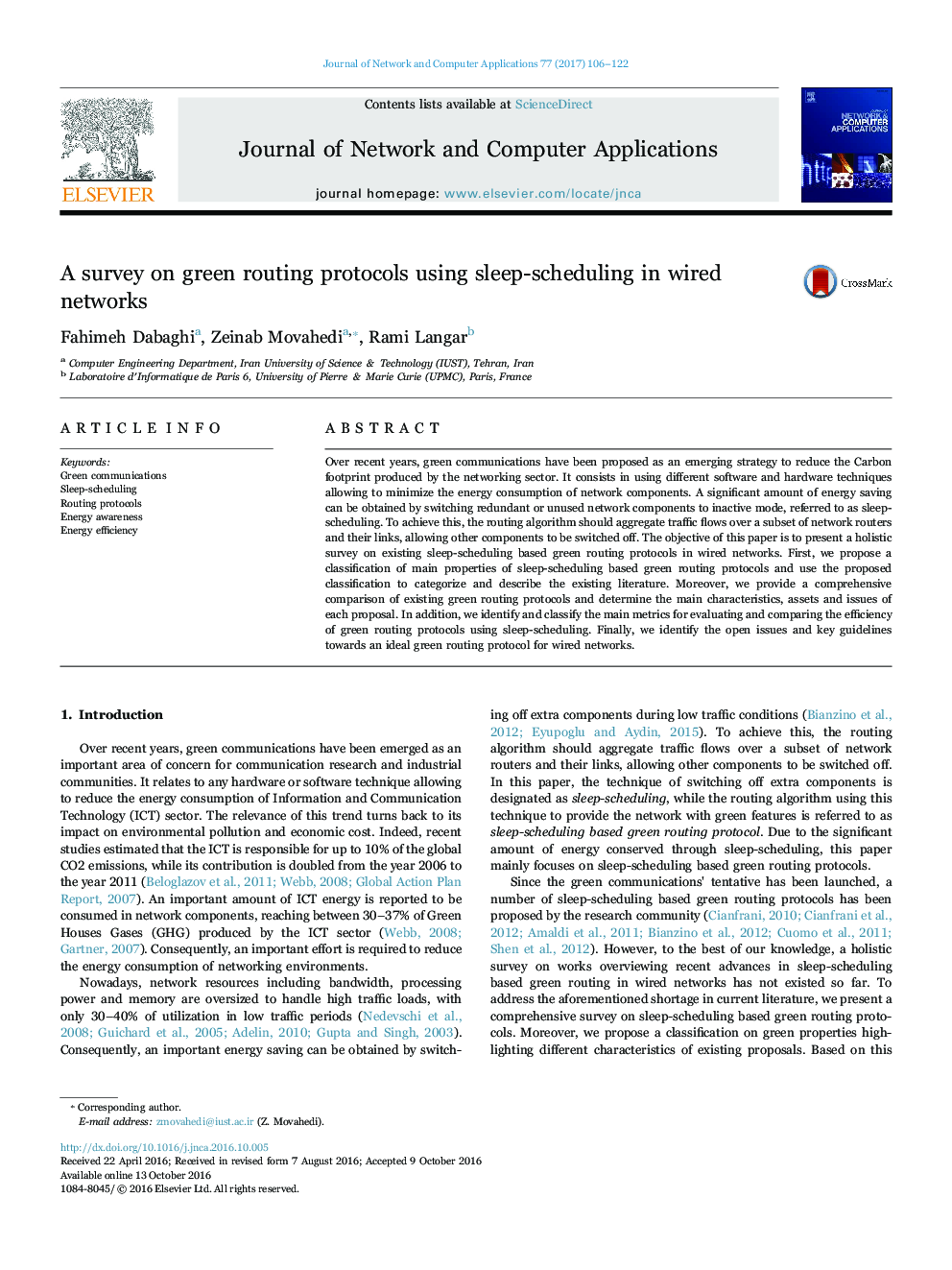| Article ID | Journal | Published Year | Pages | File Type |
|---|---|---|---|---|
| 4956147 | Journal of Network and Computer Applications | 2017 | 17 Pages |
Over recent years, green communications have been proposed as an emerging strategy to reduce the Carbon footprint produced by the networking sector. It consists in using different software and hardware techniques allowing to minimize the energy consumption of network components. A significant amount of energy saving can be obtained by switching redundant or unused network components to inactive mode, referred to as sleep-scheduling. To achieve this, the routing algorithm should aggregate traffic flows over a subset of network routers and their links, allowing other components to be switched off. The objective of this paper is to present a holistic survey on existing sleep-scheduling based green routing protocols in wired networks. First, we propose a classification of main properties of sleep-scheduling based green routing protocols and use the proposed classification to categorize and describe the existing literature. Moreover, we provide a comprehensive comparison of existing green routing protocols and determine the main characteristics, assets and issues of each proposal. In addition, we identify and classify the main metrics for evaluating and comparing the efficiency of green routing protocols using sleep-scheduling. Finally, we identify the open issues and key guidelines towards an ideal green routing protocol for wired networks.
